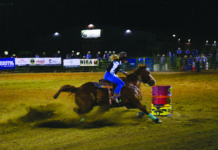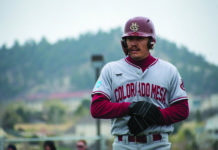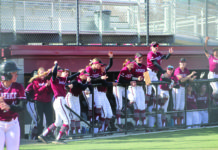With the rest of spring collegiate sports being cancelled due to the COVID-19 pandemic, the NCAA has a lot of free time to pass some crucial policies and bylaws on the name, image and likeness policies for student-athletes. Thankfully, they are looking to do just that.
The last calendar year has seen states like Colorado and California pass bills that would assist in allowing collegiate athletes to profit off their name, image and likeness (NIL). However, the NCAA is now making strides with meetings this month to look into making changes to their harsh policies regarding the matter.
Now, Division I athletes will presumably benefit more from these potential policy changes, but Division II and even Division III athletes can still see an upside.
In a recent interview hosted on the NCAA Division II Twitter account, Terri Steeb Gronau, the Vice President of NCAA Division II Governance, shed some light on the topic discussing the updates and status of the meetings about the changes.
The NCAA Convention this last January was where the most conversation and planning for the meetings coming up took place and the framework for the potential changes were set at this convention.
“We were able to have really robust conversations with several groups including conference commissioners, athletic directors and several of our governance bodies,” Gronau said in the interview. “[We] began to have some good conversations with our National Student Advisory Committee. That really helped set some framework for future conversations that we did have through this winter leading up till now.”
Back in March, NCAA Division II had a larger legislation committee meeting that included athletic administrators, coaches and athletes. Terri Groanau explained the groups in that meeting took feedback back from the convention from January and collectively put together “a set of concepts that could ultimately be legislative changes.” Those concepts will be reviewed through the meetings in April.
As this has been in the past, it continues to be a complicated process and by the sounds of it, it looks to continue to be that way. However, the general mood towards the Division II level is that student athletes will have more freedom and opportunities to make money off their NIL in the next year than they ever had in years past.

“This is a complicated area,” Gronau said. “It takes time to really understand it, and so people really have been thoughtful. I continue to use that word because that’s really what I have seen. Thoughtful but creative […] wanting to look at ways that can really make the student athlete experience better on campuses.”
A way a Div.II athlete could make a profit on their NIL with these potential concepts, as explained in the interview, would be a student in a business class creating an entrepreneurial product that they now want to sell. If that product is related to their sport or athletic ability, they would not be able to do so, however, the new possible legislation could change that in the future.
“I think our division feels like it doesn’t matter. It’s the student athlete’s work product. If they want to be able to use their name, image, and likeness to promote that product, to sell that product, they should be able to do so,” Gronau said.
Other concepts would allow more flexibility on fundraisers or commercial products that are promoted by the athlete solely and not by the university in which they attend.
The other biggest question is, when? When will these potential changes actually be implemented because some individual states, like Colorado and California, are aiming toward 2021 with their legislations, but states like Florida are holding off until 2023.
“The hope is once when we collect all that feedback and continue to gain consensus from the membership over the spring, that by the time we go into our summer council meeting, we’ll have actual legislative items for our presidents council to sponsor for a full vote of the membership in the January convention,” Gronau said.
So in January. The winter of 2021 is when the actual legislation will take form and be presented and voted upon.




